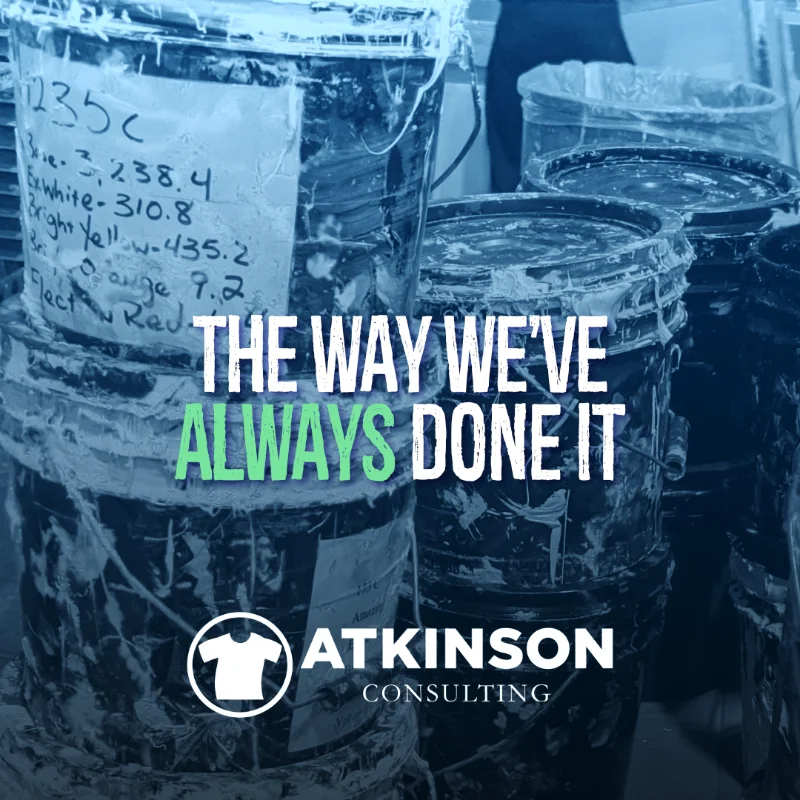Do you feel that your shop sometimes is trapped in a rut? Sure, you have years of cranking out orders, but somehow things just aren’t the way they should be?
It’s a nagging feeling really, and you can’t quite put your finger on it.
Take a step back and observe. What you see may shock you.
Staff – The Heartbeat of Your Business?
At one point you were very picky about your crew.
But with normal attrition and some staff members making life changes, you find yourself with less than optimal folks working on tasks.
Finding experienced people that will come to work for you is almost impossible. So you sacrifice skill and talent for people that you can train. But that full package training never gets clicked in, so you have some people doing the work that is half-trained at best.
The problem now is that they don’t know the “why” behind some of the steps needed to ensure craftsmanship. What is the best practice for any step that is needed? They don’t have a clue.
Without that training or guidance, they make up their own rules or take steps that make the work easier. Months or years go by, and a few cycles of these types of employees and nothing is close to where it should be.
Most people are like water, they follow the path of least resistance.
That’s why a simple print, such as white ink on a black shirt, comes out a rough, translucent, and mediocre result.
Nobody knows why. They don’t even know it’s wrong.
So when you or someone points out that there is an opportunity for improvement, many people get defensive. In fact, the first thing some of the veteran staff do is start blaming the ink and try to doctor the process by double or triple stroking to get more opacity. They even start adding more squeegee pressure in hopes that this will do something.
But of course, it doesn’t, as their band-aid fixes are only driving bigger problems into the work.
The Problem With Band-Aids
On the surface, you could commend someone for trying to solve the problem. After all, they recognized the fact that they needed more opacity in the print. They made the effort.
However, the bigger challenge here is they don’t see that the problem is further up the food chain in the process. Never getting around to training the staff, and poor understanding of the basic mechanics of how things work is at play here.
And by the way, this could be a challenge in any task in your shop…not just with the print. I’m using that as an example.
The problem with band-aids is that they cover up the issue instead of eliminating it at the source.
Insist on Excellence
One place to start is driving home the level of performance that is expected by your crew every day.
Ask yourself, “How would a professional do this?” or “What does success actually look like”?
If you don’t know, find out.
It’s not like the information on how to do things better is being kept a secret. The exact methods on how to do anything in this industry are out there available to you right now.
On some level, you probably may even know what these best practices are, but they are just ignored or stepped over them in your shop.
Compare
Think about this, in any other industry you can tell the level of skill and craftsmanship by observing how those people go about their work.
For example, let’s look at chefs and the restaurant business. Chefs are meticulously picky people. Everything has to be exact and just right.
Why?
Because they know that pushing their product out into the restaurant will elicit one of several reactions.
- Surprise and delight that will bring customers coming back.
- Apathy or indifference
- Disgust or anger because something is wrong
Of course, they are shooting for the first one. Surprise and delight that will bring customers coming back.
In your shop, you are too. Repeat customers drive more value to your company’s bottom line.
Professional chefs demand that the restaurant staff prepare the food a certain way. Ingredients need to be fresh. The onions are chopped just so. Time and temperature are closely watched. There is a technique is involved in everything they do. Even how the food is plated is handled with care because we eat with our eyes first.
Chefs know that the level of care in every step has a direct correlation to how the food is tasted by the customer.
You can see where I’m going with this. In your shop, are you demanding the exactitude that a chef would deploy?
A chef demands that the process of preparing the food meet certain levels of perfection as that drives the final outcome.
In your shop, the craftsmanship of preparing the screens, mixing the ink, counting the shirts, and the process of printing has a direct outcome on how your customers will think about what you send them in a box.
It all matters.
Observe Your Shop
Take a moment and review how your shop operates on a daily basis.
Are you thinking about every single step like a chef would? When you have mediocre results, like that opacity issue mentioned earlier, are you looking backward to see what “ingredients” or steps caused that problem?
Do you think a professional chef would tolerate a disorganized, dirty and cluttered kitchen? Look around your shop. How clean is it? What is the level of junk under your dryer, or allowed to pile up on any horizontal surface? Can you pick up an ink bucket without fear of getting ink all over your hands?
Look at the training with who is assigned to do the work. Are you shoving people into roles that they are unprepared for? Do they have the training to achieve consistent, predictable, and repeatable results?
Fix It
If you’ve been reading my blogs for a bit you know that my favorite quote is “It’s not what you preach, it’s what you tolerate.”
What bad habits are you tolerating in your shop? How does that impact the final result that you are shipping to your customers?
The way you’ve always done things may not be producing the results you need.
Pretend you are a chef walking through your shop. What do you think needs to be changed in order to produce a superior result?
Fix it.





